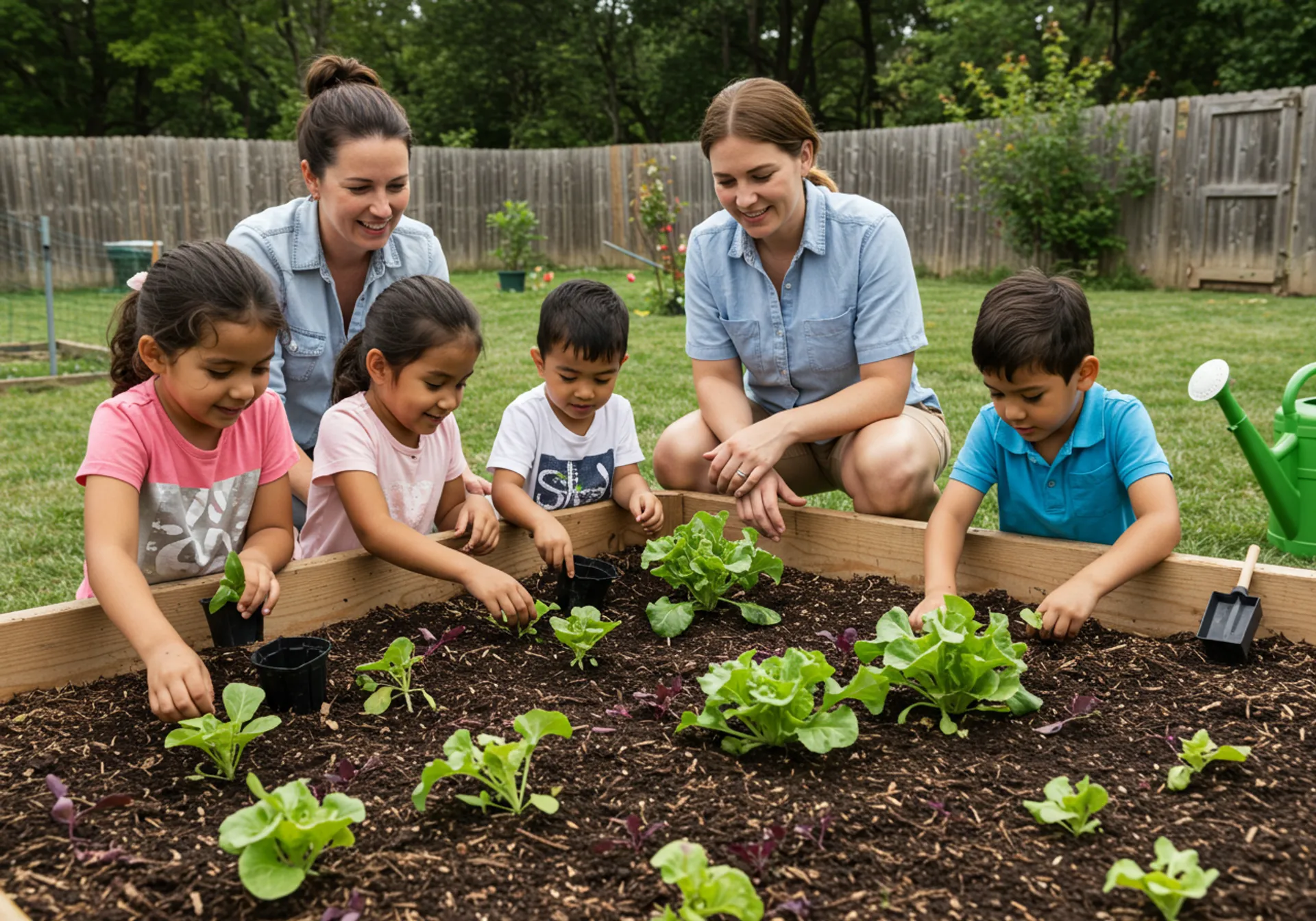One of the most meaningful lessons we can give our kids is a real connection to the food on their plates. Understanding how food is grown, who grows it, and what it takes to get from soil to supper helps children build healthy habits, appreciate hard work, and care for their community. In the High Country, we are surrounded by opportunities to make food education hands-on, local, and fun. Here is a practical, family-friendly guide to teaching kids about local agriculture — no matter your budget, schedule, or experience level.
Why “Local Food Literacy” Matters
- Healthier choices: When kids help pick spinach or tomatoes, they are more likely to eat them at dinner.
- Community connection: Meeting farmers builds trust and gives children real role models.
- Environmental awareness: Local food often means shorter transport, less packaging, and a clearer picture of seasonal eating.
- Life skills: From reading seed packets to measuring ingredients, kids practice math, science, and planning.
 Start With What You Have
Start With What You Have
You do not need a full backyard garden to begin. Start with small, manageable steps and build from there:
- Windowsill herbs: A sunny windowsill can host basil, mint, or chives. Kids can snip herbs and sprinkle them on eggs or pasta.
- Container garden: Tomatoes, peppers, lettuce, and strawberries grow well in pots. Let kids choose a plant, decorate the pot, and keep a simple watering chart.
- Compost curiosities: Talk through food scraps and what returns to the soil. Even a small countertop bin can spark great questions.
Turn Shopping Into a Scavenger Hunt
Whether you are at a farmers market or a grocery store that highlights local goods, make shopping an adventure:
- Create a list of in-season items and let kids find them.
- Ask your child to pick one new vegetable and one new fruit to try each month.
- Compare labels and talk about what local, regional, and organic mean.
To learn more about seasonal produce and nutrition basics, explore USDA MyPlate, a simple, authoritative guide to balanced meals and food groups.
Visit a Farm or Join a CSA
Meeting farmers is one of the most powerful ways to teach kids where food comes from. Many farms offer tours, you-pick days, or harvest festivals. If schedules are tight, a CSA (Community Supported Agriculture) share brings farm lessons to your kitchen every week.
- Farm tours: Ask about soil, irrigation, and pests. Encourage your child to ask the farmer one question.
- You-pick experiences: Kids learn to select ripe fruit and handle produce gently — and they love the instant reward.
- CSA shares: Unpack the box together, look up any unfamiliar items, and plan a simple meal using at least one new ingredient.
To find nearby markets and CSAs, use the USDA Local Food Directories, a public database that helps families connect with farms and markets.
Cook Together: From Harvest to Plate
Cooking is where food learning sticks. Focus on recipes that fit your weeknights and your child’s age. Even toddlers can wash produce or tear lettuce; older kids can chop soft vegetables with a kid-safe knife, measure, and read a short recipe.
- Five-ingredient rule: Keep weeknight recipes quick to reduce stress and increase follow-through.
- Prep baskets: Place pre-washed, ready-to-use produce at kid eye level in the fridge to encourage participation.
- Flavor labs: Let kids taste herbs, compare apples, or vote on vinaigrette ingredients.
Need ideas to tie local produce into your weekly routine? See our meal planning tips in Healthy Meal Planning for Busy Moms: Quick and Nutritious Recipes.
 Make It Educational (Without Feeling Like Homework)
Make It Educational (Without Feeling Like Homework)
Food education blends beautifully with school subjects. Try these bite-sized, high-impact activities:
- Science: Sprout beans in a clear jar to observe roots and shoots. Track growth with a ruler.
- Math: Double or halve a recipe; weigh produce; estimate cost vs. actual price.
- Geography: Map where different foods in your kitchen come from. Which are closest? Which traveled the farthest?
- Language arts: Keep a “garden journal” with drawings, new vocabulary, and favorite recipes.
Teach Seasonal Eating
Seasonality helps kids understand why strawberries taste best in summer and why root vegetables shine in fall. Talk about how weather, daylight, and soil affect flavor and availability. Plan a small seasonal ritual — like a first-tomato sandwich in late summer or a winter soup night with local squash and potatoes.
Seasonal eating also supports sustainability by lowering the distance food travels. If your family is curious about reducing food waste while cooking with seasonal produce, the EPA’s guide to reducing wasted food at home offers practical, research-backed tips.
Build Relationships With Local Producers
Kids remember names and faces. When children regularly see the same egg farmer, cheesemaker, or veggie grower, they begin to value the people behind their food. Try:
- Buying one staple from the same vendor each week and saying hello by name.
- Asking how weather affected the week’s harvest.
- Letting your child hand over cash or a card to practice social skills and money sense.
Outdoor Learning in the High Country
Use our natural surroundings as a classroom. A short walk can become a lesson in pollinators, edible wild herbs (with a knowledgeable guide), or soil types. For more outdoor activity ideas, explore Family Adventures in the High Country: Top Outdoor Activities for Moms and Kids and our Top 10 Family-Friendly Fall Activities in the High Country.
Host a “Local Food Night”
Choose one evening a month to celebrate local ingredients. Keep it simple and kid-centered:
- Pick a theme (pizza with local veggies, taco night with local beef or beans, soup and salad with farmers market greens).
- Assign jobs (washing, tearing, mixing, setting the table, reading the recipe).
- Share one new fact learned about an ingredient or the farmer who grew it.
 Overcoming Common Roadblocks
Overcoming Common Roadblocks
- “We do not have time.” Start with one farmers market visit per month or one new produce item per week.
- “It is too expensive.” Buy in season, choose seconds (imperfect produce), and build simple meals around affordable staples like potatoes, carrots, beans, and eggs.
- “My child is picky.” Invite kids to choose the vegetable and the seasoning, and always pair a new food with a familiar favorite.
- “I am not a gardener.” Focus on windowsill herbs, microgreens, or a single container tomato. Success builds confidence.
Safety First
Food learning should always include safe handling. Teach kids to wash hands, rinse produce, separate raw and cooked foods, and use age-appropriate tools. The CDC’s food safety guidance is a reliable, easy-to-scan resource for home kitchens.
How to Keep the Momentum
Habits stick when they fit your family’s rhythm. Set one realistic goal for the next month — like tasting one new local item, visiting a farm stand, or planting a pot of lettuce. Celebrate small wins and keep a running list of “foods we tried and liked.” Over time, your child will build a strong, joyful relationship with wholesome food and the people who make it possible.
The Big Picture
Teaching kids about local food is more than nutrition. It is a pathway to gratitude, stewardship, and community pride. With a few simple routines — shopping seasonally, cooking together, meeting farmers, and exploring the outdoors — you nurture lifelong skills and support the local agriculture that keeps the High Country vibrant and resilient.
Ready to turn seasonal ingredients into simple meals? Check out our tips in Healthy Meal Planning for Busy Moms: Quick and Nutritious Recipes.

 Start With What You Have
Start With What You Have Make It Educational (Without Feeling Like Homework)
Make It Educational (Without Feeling Like Homework) Overcoming Common Roadblocks
Overcoming Common Roadblocks











